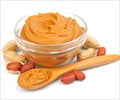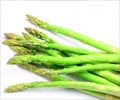Highlights
- The outer covering of the rice called the bran is a rich source of proteins, fats, minerals and micronutrients.
- Rice bran is used as animal feed but could have benefits for human health and nutrition.
- One serving of rice bran contains more than half of a person's daily requirements of vitamins such as thiamine, niacin and vitamin B6.
The researchers used an approach called food metabolomics, or "Foodomics", which uses a sophisticated biochemical technique, called mass spectrometry, to identify and measure the abundance of many different molecules present in a food.
Assessing three U.S. rice varieties that were previously used in human dietary intervention trials, the researchers found 453 metabolites, including 65 that had been shown to have potential medicinal and health promoting attributes and 16 that had not been reported for rice bran before.
Professor Ryan said: "We investigated the amino acids, vitamins, cofactors and secondary metabolites that can be found in rice bran, as we suspected that they contribute to its medicinal and nutritional benefits. We were surprised to find that cofactors, vitamins and amino acids make up almost 50% of the total small molecule content."
A literature search conducted by the authors showed that:
- Some of the compounds they identified in rice bran had been shown in previous studies to have anti-inflammatory, anti-microbial and anti-hypertensive properties, among others.
- Rice bran also has a protein content of 12-15% that deserves attention as it could help tackle nutrition shortages that are a major global health concern.
- Traditionally, rice bran is thought to be a cheap fiber source and only considered useful as a source of lipids, for example as cooking oil.
- A single serving of rice bran - 28 grams according to USDA - delivers more than half of a person's daily requirements of important vitamins such as thiamine, niacin and vitamin B6.
Reference
- Elizabeth P. Ryan et al., Rice Bran Metabolome Contains Amino Acids, Vitamins & Cofactors, and Phytochemicals with Medicinal and Nutritional Properties, Rice (year) http://dx.doi.org/10.1186/s12284-017-0157-2.
















